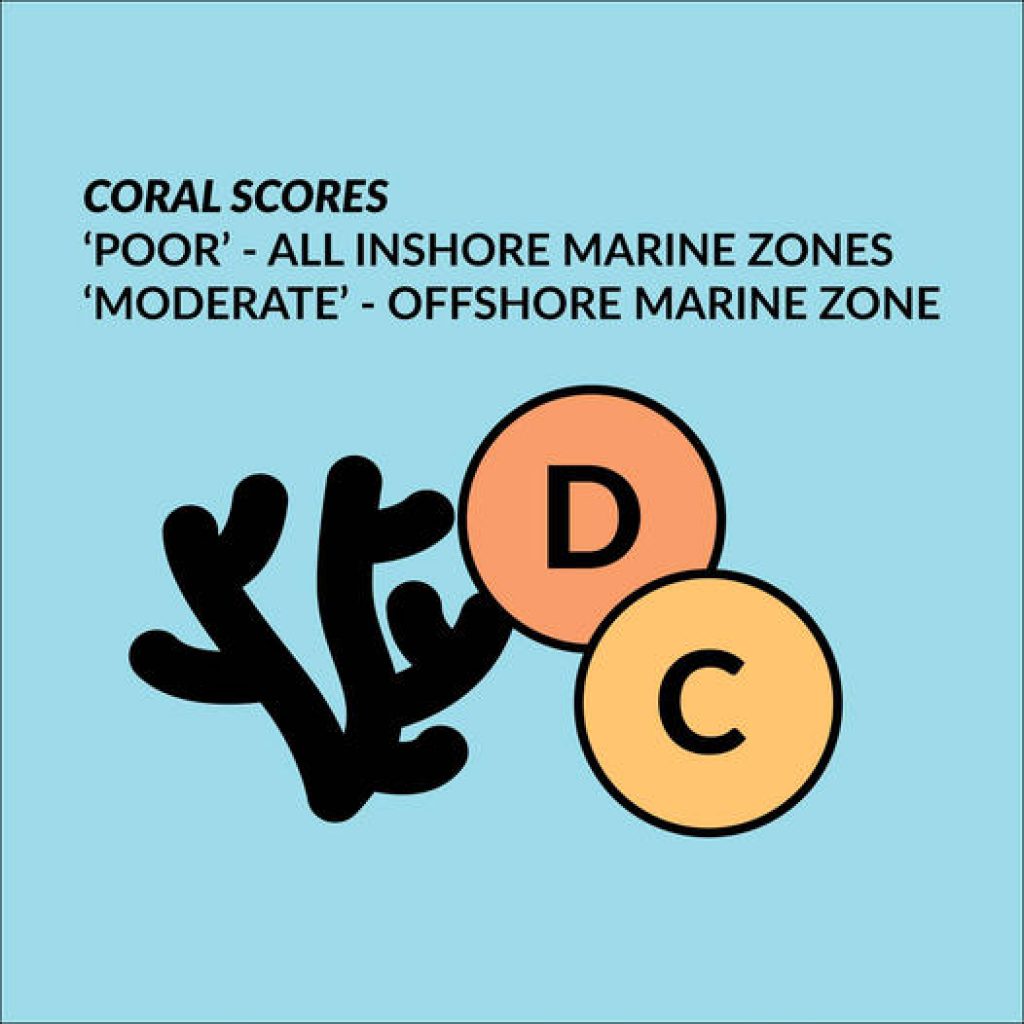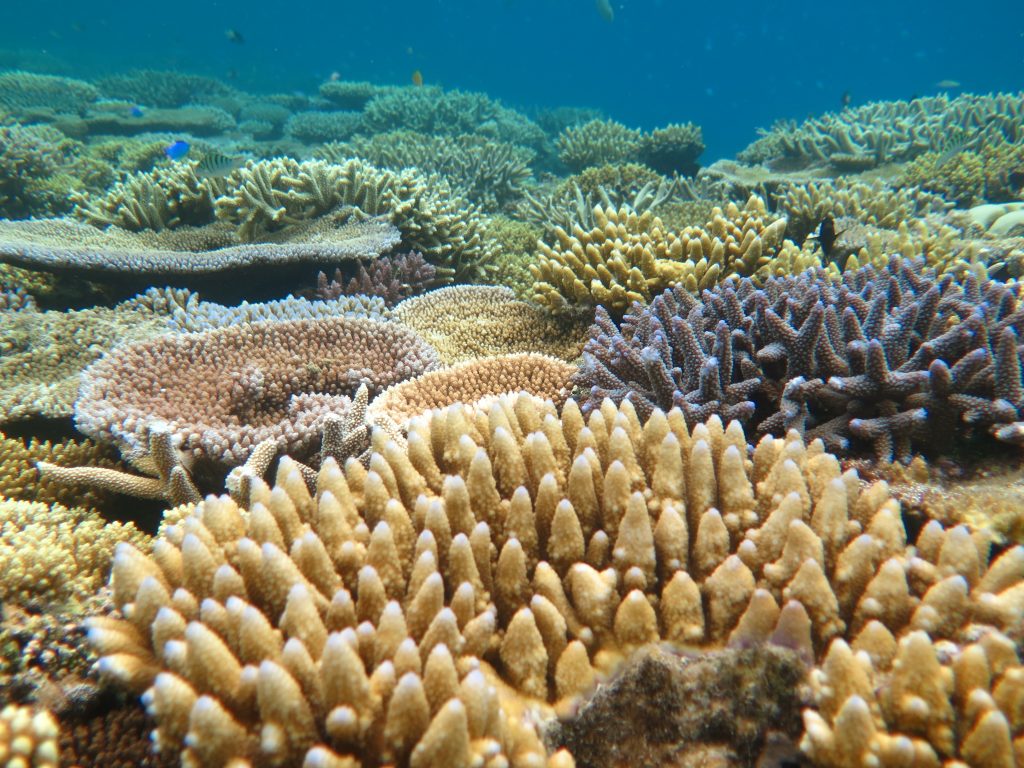Reef Health as Reported by the Report Card Compared to AIMS
How do the Mackay-Whitsunday-Isaac regional Report Card coral scores compare to the 2020-2021 Australian Institute of Marine Science (AIMS) report?
In our 2020 Report Card, Coral was in ‘poor’ condition for inshore zones and ‘moderate’ condition in the Offshore Zone, with little recovery in recent years.
A summary report from the Australian Institute of Marine Science (AIMS) released in July 2021 reported widespread recovery of the Great Barrier Reef (GBR). Given that we use AIMS data in the calculation of Report Card coral scores, why does the AIMS report offer a optimistic outlook for the GBR, while the 2020 Report Card suggests coral reefs are still in trouble?
1) Reporting Period:
Our Report Card reports on conditions for the 2019-20 period due to the time needed to gather and process the data. The AIMS report is for the 2020-21 period.

2) Reefs Surveyed:
The Long-term Monitoring Program (LTMP) only surveys offshore sites (as defined by the Report Card), while the MWI Report Card reports on both inshore and offshore marine zones.
3) Sampling Methodology:
The widespread recovery referred to only reports ‘percent of coral cover’ as estimated from manta tows. However, the Report Card coral score for the Offshore Zone also incorporates AIMS data from fixed transects, including juvenile density and the percent of coral community change.
4) Survey Depth:
Manta tows survey the reef crest at approximately 5 to 6 m depth. In contrast, fixed transects are collected along the reef slope at 6 to 9 m depth. Coral communities at different depths often have different growth rates and levels of susceptibility to disturbances.
5) Coral Communities Surveyed:
Report Card scores are calculated from estimates of hard and soft coral cover. AIMS noted that the widespread recovery was primarily due to increases in fast-growing hard corals.
To download a copy of the Mackay-Whitsunday-Isaac 2020 Report Card, click here.
To view the AIMS report, click here.

Photo credit: Alysha Lee



